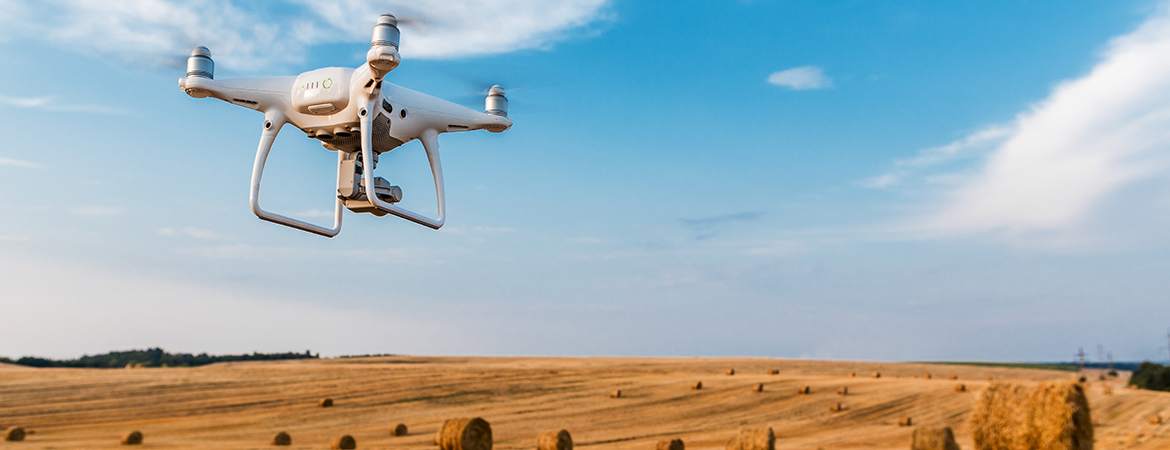When and where can I fly my drone?
As more and more people pluck drones off retail store shelves for both personal and business use, these little sci-fi-like flying machines are becoming an increasingly common sight in Kentucky’s skies.

Buzzzzzzzzzzzzzz. Zzzzzzzzzzzip. Buzzzzzzzzz.
No, that noise coming from the sky isn’t an oversized bionic bumblebee. It’s a drone.
As more and more people pluck drones off retail store shelves for both personal and business use, these little sci-fi-like flying machines are becoming an increasingly common sight in Kentucky’s skies.
However, what many people fail to realize is that just because you can purchase a drone almost anywhere doesn’t mean you can also fly it anywhere, anytime, or for any purpose.
Very simply, there are two main types of drone usage: recreational and business. Let’s break each category down individually, then cover some quick tips for piloting a drone under either circumstance.
Recreational users | Recreational users fly drones for their own personal interest and enjoyment. According to the Federal Aviation Administration (FAA), important rules apply to recreational drone users. Always keep the drone within your line of sight, never fly over groups of people, and check airspace restrictions using this interactive map by the FAA.
Commercial users | Business, or commercial, use of a drone is defined as flying for business purposes, or for compensation or hire. Drones are increasingly being used professionally, from wedding photography to insurance adjusting.
People piloting drones that weigh under 55 pounds for business purposes must first pass an aeronautical knowledge test to earn a remote pilot certification. This certificate must also be renewed every two years by taking a recurrent knowledge test. To become a commercial pilot, you have to be at least 16 years old. (Chances are you aren’t buying a drone that weighs more than 55 pounds, but in case you’re curious, there’s a different certification process for those.)
Some drones must be registered. Click here to learn more and/or to begin the registration process.
General tips for flying both recreational and commercial drones:
- Stay away from manned aircraft, especially low-flying aircraft and helicopters. Contact the airport and control tower before flying within five miles of an airport or heliport.
- Keep the drone within sight.
- Stay below 400 feet.
- Operate during daylight or civil twilight, which is defined as the 30 minutes before official sunrise to 30 minutes after the official sunset (with appropriate anti-collision lighting).
- Do not intentionally fly over unprotected persons or moving vehicles, and remain at least 25 feet away from individuals and vulnerable property.
- Follow temporary flight restrictions around stadiums and racetracks. Flying drones in and around stadiums is prohibited starting one hour before and ending one hour after the scheduled time of any of the following events: Major League Baseball, National Football League, NCAA Division One Football, NASCAR Sprint Cup, Indy Car, and Champ Series races.
- If you’re visiting the nation’s capital, leave the drone at home. The airspace around Washington, D.C. is more restricted than in any other part of the country, effectively labeling the 30-mile radius around Ronald Reagan Washington National Airport a no-drone zone.
- Because of privacy reasons, many people may be apprehensive to accept them into everyday life. As a flier, use this technology in a responsible, ethical, and respectable way. When possible, let others in the area know you are using a drone and respect their privacy. Do not conduct surveillance or photograph persons in areas where there is an expectation of privacy without the individual’s permission.
- Download the FAA’s B4UFLY app, which helps operators determine whether there are any restrictions or requirements in effect at the location they wish to fly.
* Operators can apply for waivers from the FAA that allow them to operate at night, beyond the line of sight, above 400 feet, and other specific types of operation.
Keep in mind that laws, rules, and regulations may change to meet the ever-evolving drone landscape. For your safety and the safety of others, visit the FAA website regularly to stay up-to-date on the evolution of this fast-paced technology.
>> Your KFB agent can offer insurance for business and/or personal drone usage. Find an agent near you!
Check out the video below and subscribe to our YouTube channel for more Tools and Resources.
